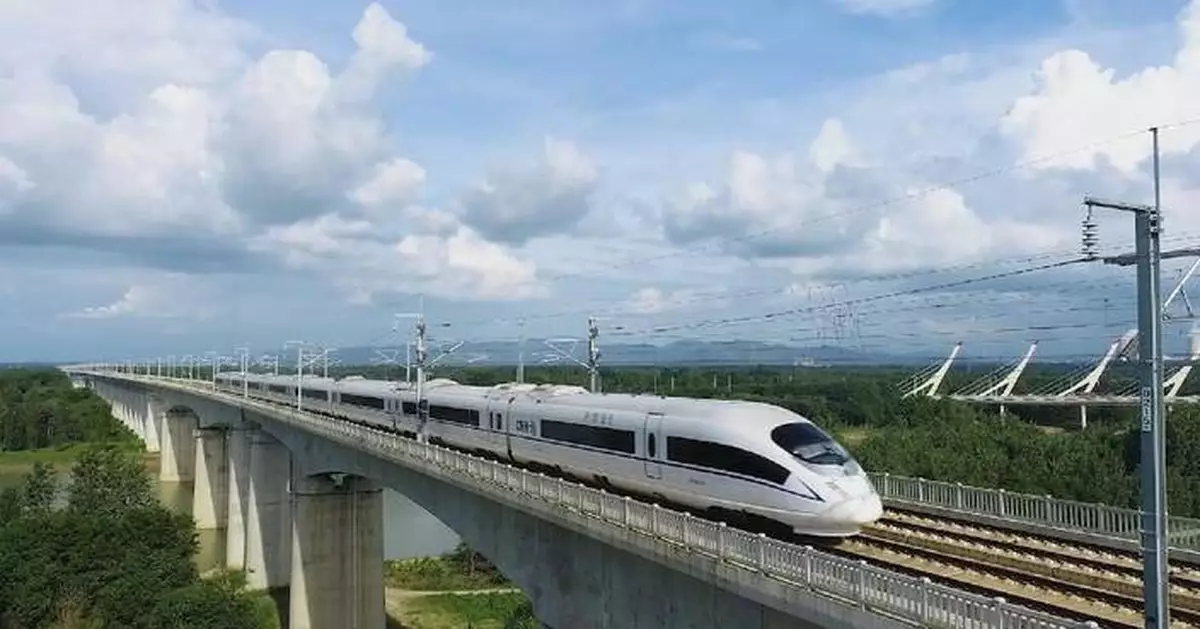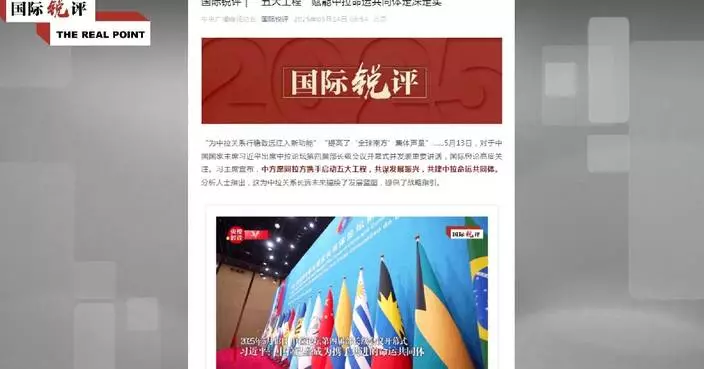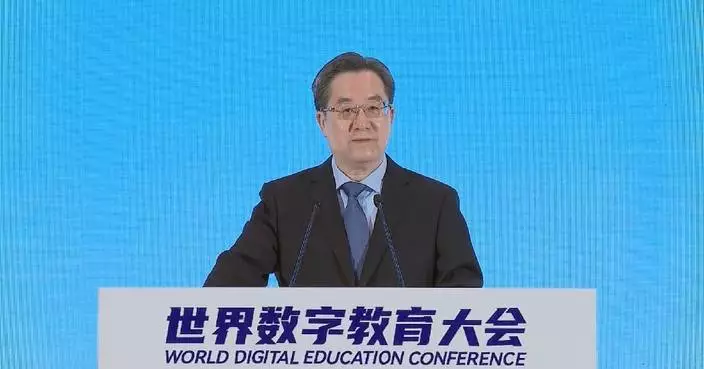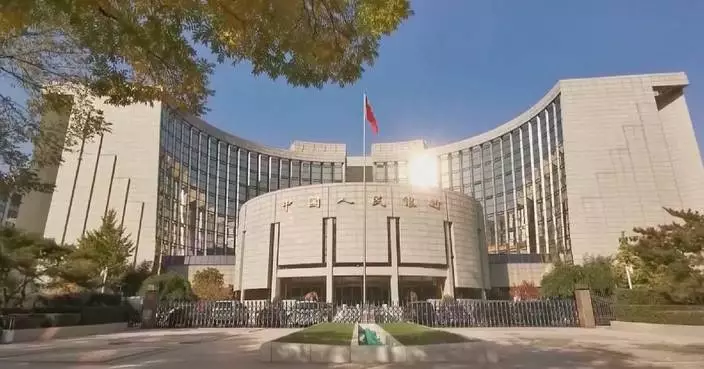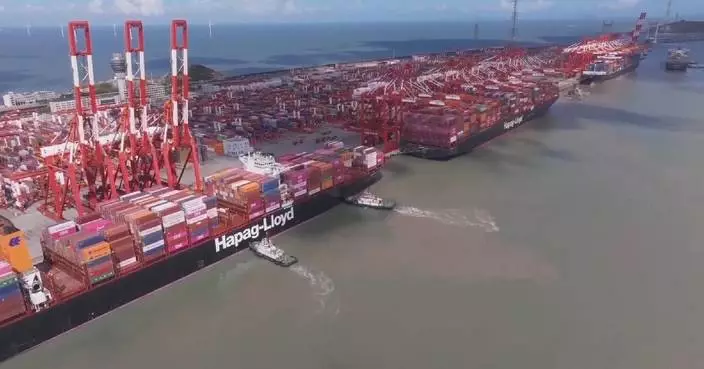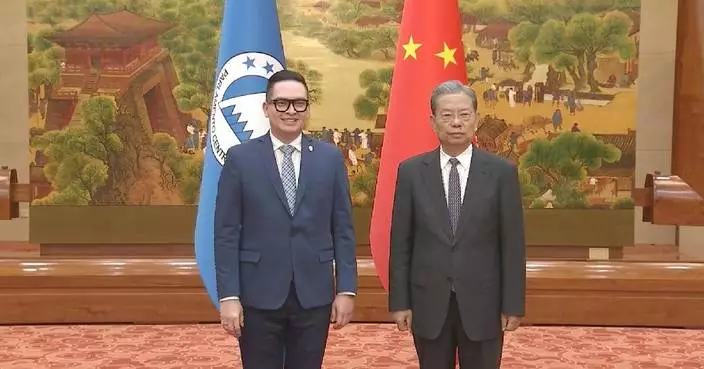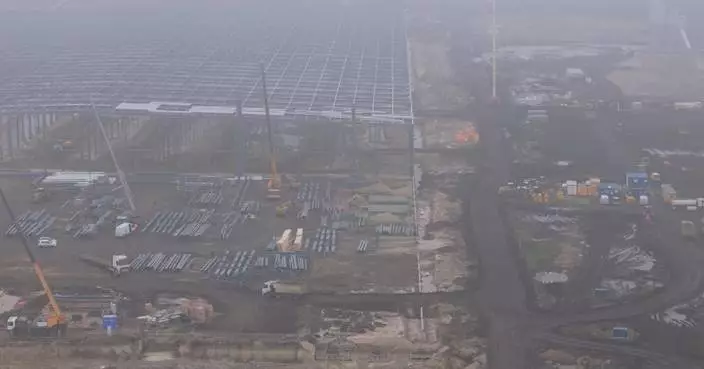The total length of operational rail tracks in China surpassed 160,000 km on Saturday, after the inauguration of a section linking two cities in the southern Guangdong Province.
On Saturday, a high-speed train departed from Meizhou to the provincial capital of Guangzhou, marking the launch of the new route. The new section is part of the Longyan-Longchuan High-Speed Railway, which connects Fujian and Guangdong provinces, spanning a total of 290 kilometers.
According to China State Railway Group Co., Ltd., the operating mileage of China's high-speed rails (HSR) has reached 46,000 kilometers, ranking first in the world and surpassing the combined total of all other countries' HSR networks.
China's railway network now serves a vast portion of the country's urban areas, covering 99 percent of cities with populations over 200,000, while HSR serves 96 percent of cities each with more than 500,000 residents.
In addition, approximately 80 percent of the main corridors of the national "eight vertical and eight horizontal" high-speed railway network, outlined in a national medium- and long-term railway network plan released in 2016, have been completed.
"The planned total scale is approximately 45,000 kilometers. As of now, about 80 percent of the main corridors of the 'eight vertical and eight horizontal' rail network have been completed and put into operation, and around 15 percent are under construction. Among these, the Beijing-Shanghai corridor, the Beijing-Harbin/Beijing-Hong Kong-Macao corridor, the Qingdao-Yinchuan corridor, the Land Bridge corridor, the Shanghai-Kunming corridor, and the Guangzhou-Kunming corridor have been fully connected, while the planning and construction of the unfinished sections of other corridors are being accelerated," said Guo Chunjiang, an official with the Development and Reform Department of China State Railway Group.
Behind the 160,000 kilometers of railway operating mileage is a significant improvement in railway transport capacity and a noticeable change in passenger travel experiences.
Currently, the maximum daily capacity for passenger trains across the national railway network has reached 12,987 trains, a 184 percent increase over the 4,563 trains in 2012. Among these, high-speed rail trains account for over 10,000, reflecting a 426 percent surge from 2012. At the same time, the way passengers purchase tickets and travel has also improved.
"We have built the 12306 ticketing system, which boasts the largest global traffic and transaction scale. It has 865 million registered users, with a daily ticket-selling capacity of over 20 million tickets. The proportion of online ticket purchases is around 85 percent under normal conditions, exceeding 90 percent on peak days. This has changed the past practice of passengers waiting in long lines at train stations to buy tickets," said Yan Ying, an official with the Passenger Transport Department of China State Railway Group.
As of August, China had equipped a total of 4,703 standard high-speed train EMUs - with each unit comprising eight coaches - including 1,722 Fuxing train units. The railway system has fully implemented electronic tickets, with nearly 17 billion electronic tickets sold cumulatively. Passengers can now travel through any train station nationwide using just their ID card, enabling "one ID for all travel."
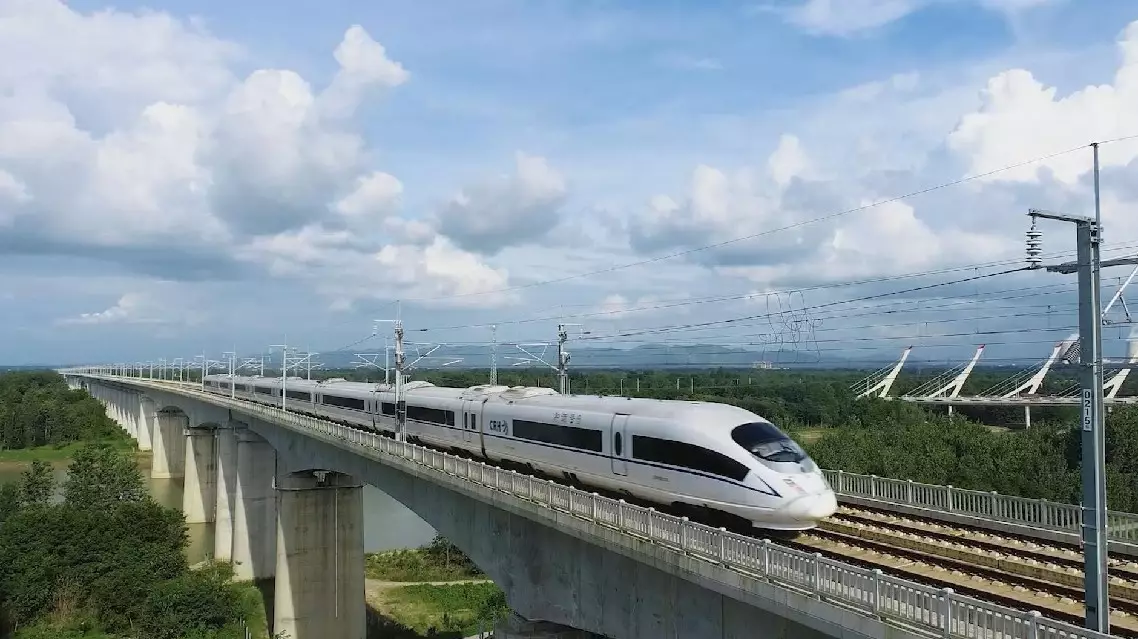
China's operating railway hits 160,000 km
Regions across China are leveraging drones and advanced farm machinery to manage grain production.
There are three different grain production seasons in China: summer grain, early rice and autumn grain, accounting for about 21 percent, 4 percent and 75 percent of the annual grain output respectively.
Traditionally, the summer harvest spans from May to late June in China every year, with most of the work focusing on reaping winter wheat, a staple grain crop, and rapeseed.
The winter wheat planted in more than 250,000 mu (16,667 hectares) of fields in Pinglu County, Yuncheng City of north China's Shanxi Province is now entering the ripening period which is crucial for the grain formation.
Located in a mountainous region, the county has scattered plots which poses challenges to manual pest and disease control. Facing the challenge, the county's agricultural department has designated the scattered plots as specific areas for drone spraying, combining human efforts with drone technology to ensure that no part of the field is left untreated.
The local authorities have deployed drones to cover over 30,000 mu (2,000 hectares) of crop fields per day. Flying over the fields, the drones are spraying pesticides and fertilizer to ensure the health and productivity of wheat crops and a bountiful summer grain harvest.
As the summer grain harvest draws near, major agricultural provinces, including Sichuan in southwest China, Hubei in central China, and Jiangxi in east China, have already begun harvesting rapeseeds.
In Zitong County, Mianyang City, Sichuan Province, rapeseed farmers are reaping a bountiful harvest. In a local agricultural park, six combine harvesters can be seen shuttling across the fields, with their gears whirring as rapeseed stalks being fed into the machines.
The entire process, from harvesting to threshing, separating, and crushing, is fully automated. The crushed rapeseed shells and straw are evenly spread across the fields, while the harvested seeds are transported to drying facilities before being sold or processed into oil for consumption.
This year, Zitong County has deployed over 1,200 harvesters to assist local farmers, with the mechanization rate in harvesting exceeding 80 percent, leading to a 30 percent reduction in harvesting costs. The full harvest is expected to be completed by the end of this month.
Meanwhile, in Jingmen City, Hubei Province, the introduction of two-stage rapeseed harvesting technology has substantially improved grain yields. The new technique involves cutting down the rapeseed, leaving it to dry on the field for a few days before using machines to gather and thresh the seeds.
This innovation has reduced the seed loss rate from 30 percent to less than 8 percent. By now, 758,000 mu (50,533 hectares) of the city's 2.32 million mu (154,667 hectares) of winter rapeseed have been harvested, accounting for more than 30 percent of the crop to be harvested. The harvest is expected to be completed by May 21.
In Linchuan District of Fuzhou City in Jiangxi Province, the rapeseed harvest is nearing its end. Local farmers are racing to take advantage of the favorable weather conditions, using advanced machinery to ensure a smooth and efficient harvest.
The area under rapeseed cultivation in the Linchuan District alone surpasses 100,000 mu (6,667 hectares). More than 2,800 farming households have begun harvesting since late April, with the mechanical harvesting rate exceeding 90 percent.

Chinese farms use drones, advanced farm machinery to manage grain production



